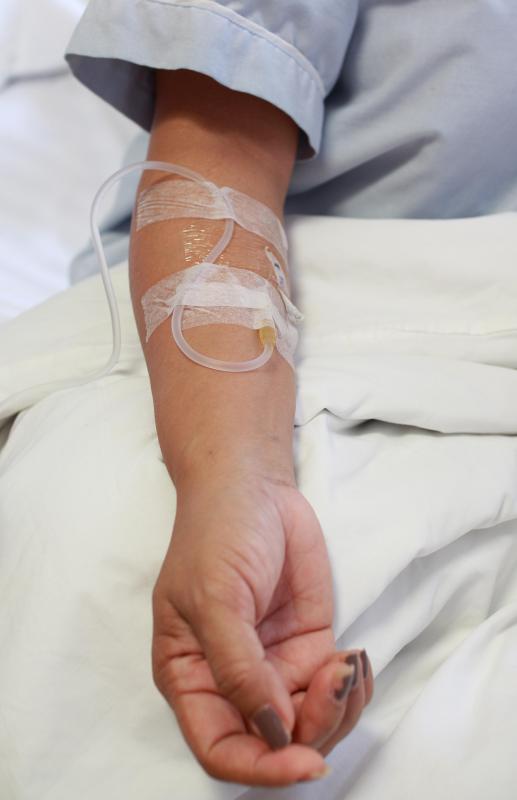At WiseGEEK, we're committed to delivering accurate, trustworthy information. Our expert-authored content is rigorously fact-checked and sourced from credible authorities. Discover how we uphold the highest standards in providing you with reliable knowledge.
What is Intravenous Infusion Therapy?
Intravenous infusion therapy is the administration of drugs by inserting a hypodermic needle directly into a vein and allowing medication to run through it. Drugs are typically run using an intravenous (IV) drip method to ensure that no air enters the bloodstream. This requires the medication to be stored in a bag and slowly released into tubing which is attached to the needle. IV therapy is typically much faster and more efficient than taking medications orally, and allows more thorough distribution of drugs throughout the body.
The use of intravenous infusion therapy is normally reserved for conditions which require immediate treatment or with those which have to be delivered in a timed fashion, meaning that not all medication can be given to the body at once. Some medications can only be given through an IV, such as many cancer medications. Most of the time IV infusion therapy is performed in a hospital setting.

IV needles are most often inserted into the veins of the arms or hands, although occasionally those in the feet or legs may be used. In very small infants, the veins located in the scalp are another option. Veins located in the chest or abdomen cannot be used at all.
Patients who are undergoing intravenous infusion therapy are generally confined to a bed for many hours. The amount of confinement that will be necessary is determined by the type and amount of medication to be received; sometimes it takes several days for a session to be complete. During this time it is important for the patient to relax and to have activities to do while being limited in movement. This will make the experience less painful and time will go by faster.

The most common side effects related to intravenous infusion therapy are soreness and redness at the insertion site. In some patients, bruising may also occur. Additional side effects may be present depending on the type of medications being administered, so patients should discuss these with a health care provider. A bandage or dressing will probably be placed over the insertion site to prevent any excessive bleeding, especially in those with bleeding conditions or who are taking blood thinners.

Some conditions that are most commonly treated using intravenous infusion therapy include cancer, various types of arthritis, Crohn’s disease, certain skin conditions, and multiple sclerosis. In some cases, fluids may also be given through an IV. Sometimes medications may be needed both before and after infusion therapy. Patients are encouraged to discuss any concerns with their doctor.
AS FEATURED ON:
AS FEATURED ON:















Discuss this Article
Post your comments